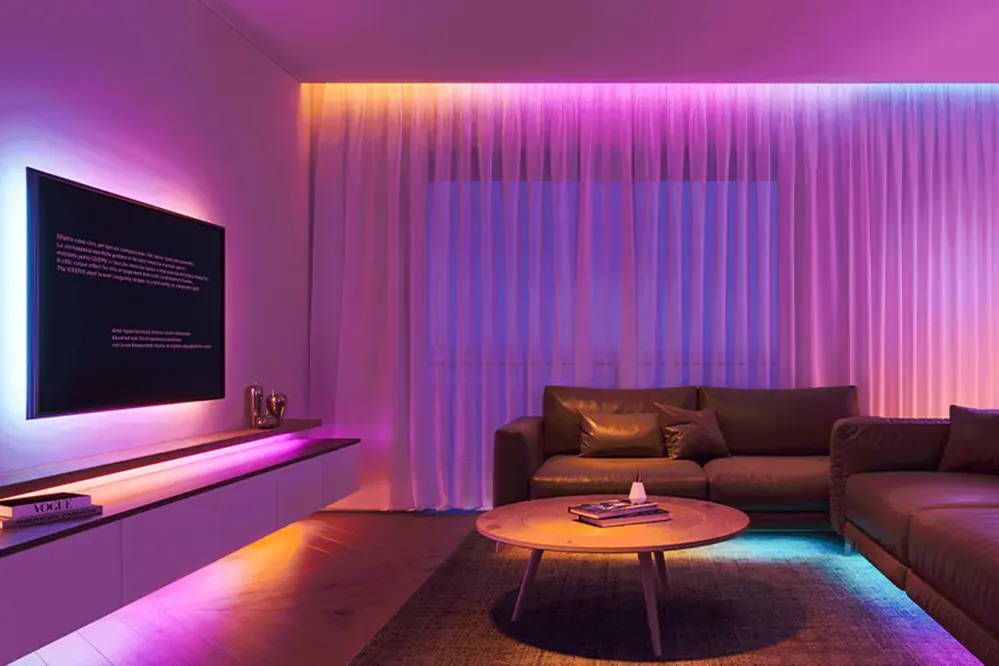Wondering where to install your LED strip lights for the best effect? Whether you’re aiming for a cozy ambiance or a modern look, we’ve got the expert tips you need. LED strip lights have revolutionized home lighting with their versatility, energy efficiency, and ease of installation. They offer a myriad of possibilities for enhancing the aesthetic appeal and functionality of any room decor. However, the question remains: should you install them on the ceiling or the wall?
LED strip lights can be installed on both the ceiling and the wall, depending on your desired lighting effect and room layout. Each option offers unique benefits and can dramatically transform your living space. Understanding the nuances of each installation method will help you make an informed decision that aligns with your design goals.
Keep reading to discover the best practices for installing LED strip lights and how to achieve the perfect lighting for your space. From choosing the right type of LED strips to advanced installation techniques, this comprehensive guide will equip you with all the knowledge you need to create a stunning lighting setup.
Ceiling vs. Wall: Which is Best for LED Strip Lights?
Understanding the Basics
LED strip lights are incredibly versatile, offering a range of lighting solutions for different spaces. Whether you decide to install them on the ceiling or the wall, the choice largely depends on the effect you want to achieve and the specific requirements of your room. These lights are not only energy-efficient but also come in various colors and brightness levels, making them a popular choice for modern homes.
LED strip lights consist of a flexible circuit board populated with LEDs (light-emitting diodes) and other components that emit light when powered. They are available in different lengths, colors, and brightness levels, allowing for customization to suit various applications. The flexibility of LED strips makes them ideal for both linear and curved installations, providing endless design possibilities.
Ceiling Installation
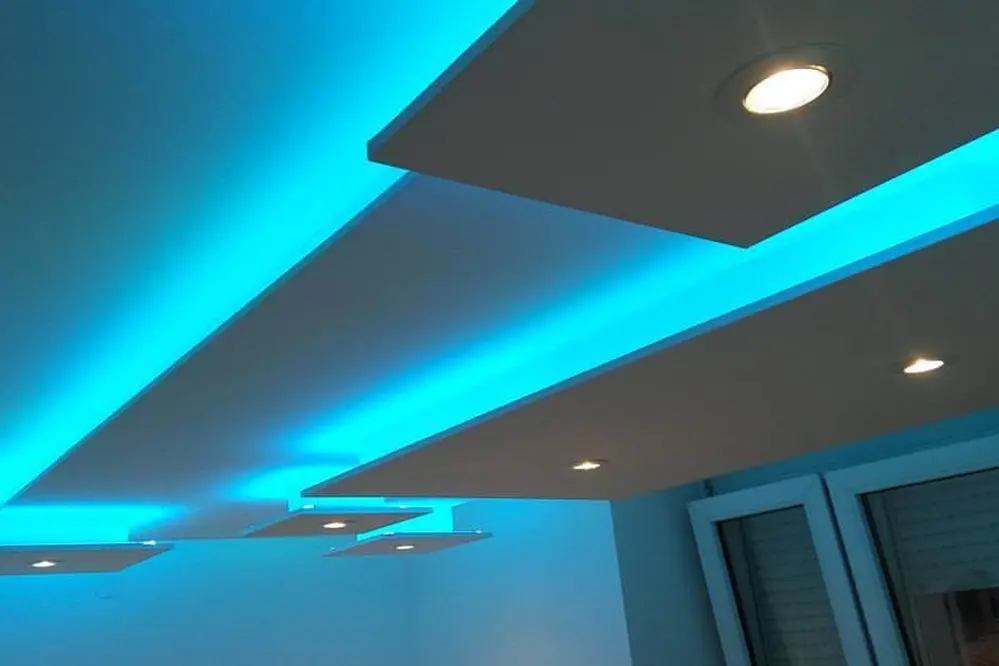
Installing LED strip lights on the ceiling can create a stunning, ambient glow that enhances the overall atmosphere of a room. This method is particularly effective for:
- Creating Ambient Lighting: Ceiling installations provide indirect lighting that can make a room feel larger and more inviting. The soft glow from above can transform a space, making it feel warm and welcoming. This type of lighting is perfect for living rooms, bedrooms, and dining areas where a relaxed and comfortable ambiance is desired.
- Highlighting Architectural Features: Use LED strips to accentuate crown molding or other ceiling details. This can add a touch of elegance and sophistication to your interior design. By highlighting architectural features, you can draw attention to the unique elements of your home and create a visually appealing environment.
- Task Lighting: Perfect for kitchens or workspaces where focused lighting is needed. Ceiling-mounted LED strips can provide ample light for tasks such as cooking, reading, or working on projects. This type of lighting ensures that you have sufficient illumination for detailed activities, enhancing both functionality and aesthetics.
Wall Installation
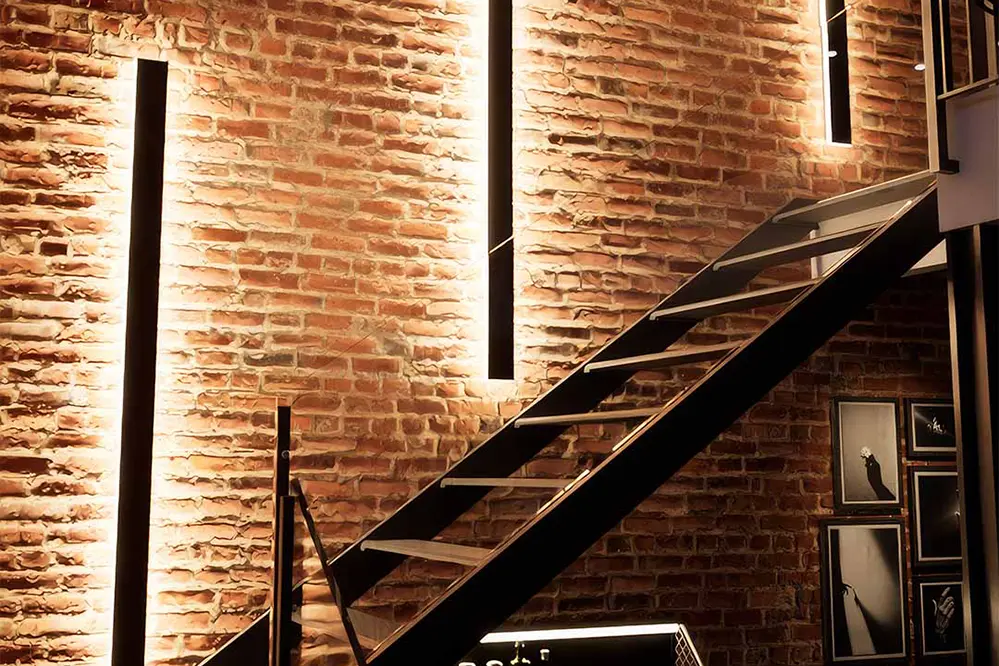
Wall-mounted LED strip lights can add a dynamic element to your interior design. This approach is ideal for:
- Accent Lighting: Highlight artwork, shelves, or other wall features. LED strips can draw attention to specific areas, creating a focal point in the room. Accent lighting can enhance the visual appeal of your space by emphasizing decorative elements and adding depth to the overall design.
- Creating Visual Interest: Use LED strips to create patterns or designs on the wall. This can add a unique and artistic touch to your space. Whether you opt for geometric patterns, abstract designs, or even custom shapes, wall-mounted LED strips can serve as a creative and eye-catching feature.
- Functional Lighting: Ideal for hallways, staircases, or areas where additional lighting is necessary. Wall-mounted LED strips can improve visibility and safety in these areas. By providing adequate illumination, you can ensure that these spaces are well-lit and easy to navigate, reducing the risk of accidents.
Choosing the Right LED Strip Lights
Brightness and Color Temperature
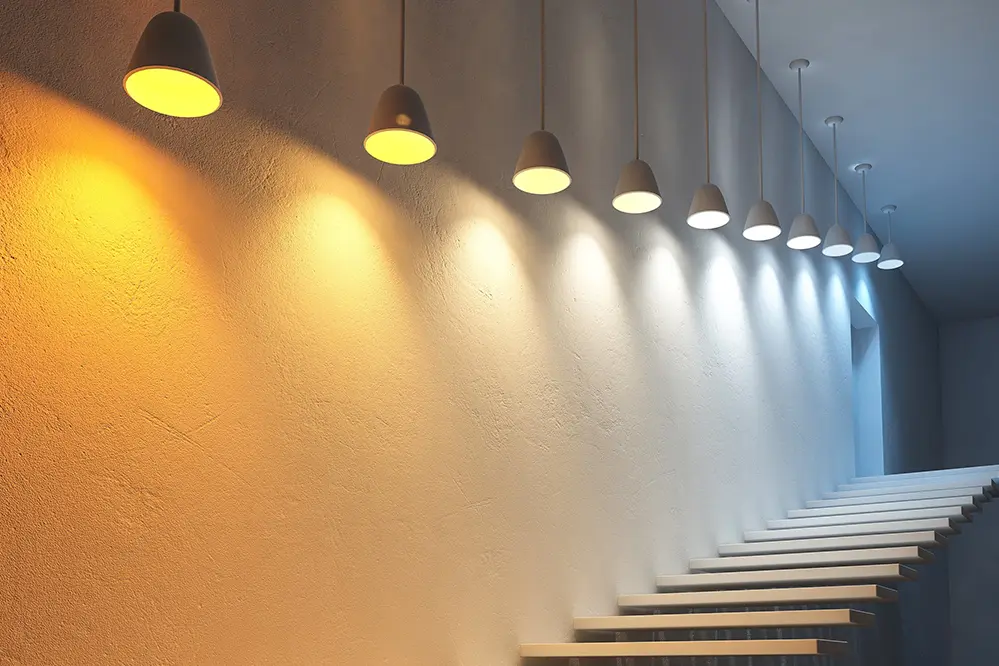
Selecting the appropriate brightness and color temperature is crucial for achieving the desired effect. Consider the following:
- Brightness: Measured in lumens, choose a brightness level that suits the room’s purpose. For example, a living room may require softer lighting, while a kitchen or workspace may need brighter lights. The brightness of LED strip lights can vary significantly, so it’s important to select the right level to match the intended use of the space.
- Color Temperature: Ranges from warm (2700K) to cool (6500K). Warm tones are cozy and inviting, making them perfect for living rooms and bedrooms. Cool tones are more energizing and are ideal for workspaces and kitchens. The color temperature of LED strip lights can influence the mood and ambiance of a room, so choose a temperature that aligns with your desired atmosphere.
Waterproof Options
For areas like bathrooms or kitchens, opt for waterproof LED strip lights to ensure durability and safety. These lights are designed to withstand moisture and can be used in areas where water exposure is a concern. Waterproof LED strips are typically coated with a protective layer that prevents water damage, making them suitable for both indoor and outdoor applications.
Installation Tips and Tricks
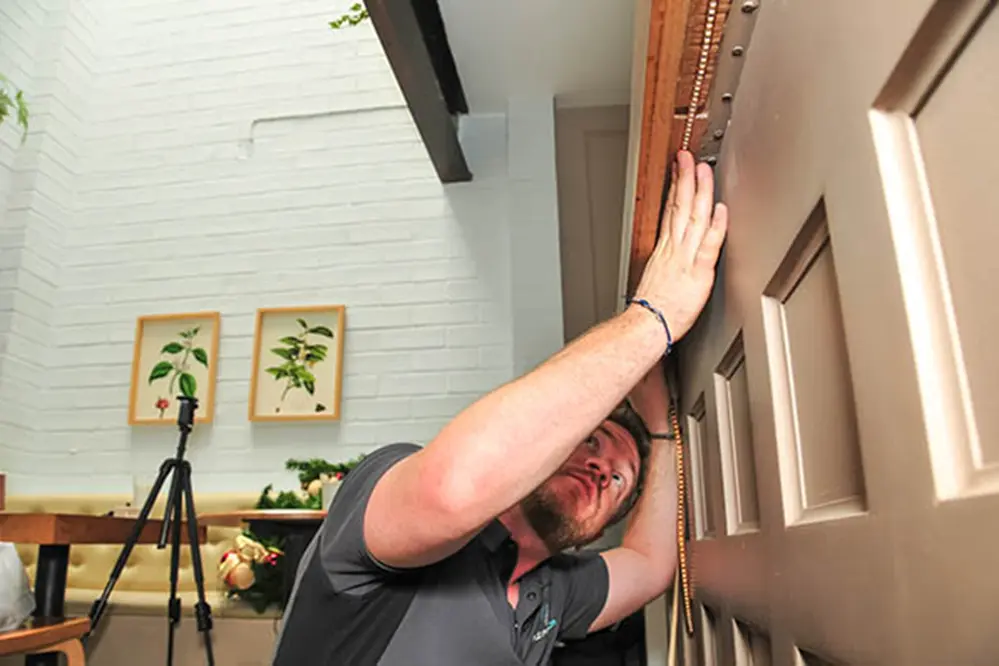
Preparing the Surface
Ensure the surface is clean and dry before installation. This will help the adhesive backing of the LED strips to stick properly. A clean surface ensures that the lights stay in place and do not peel off over time. Use a mild cleaning solution to remove any dust, dirt, or grease from the installation area, and allow it to dry completely before applying the LED strips.
Measuring and Cutting
Measure the area where you plan to install the LED strips to ensure proper placement and cut them to the appropriate length. Most LED strips can be cut at designated points, allowing you to customize the length to fit your space perfectly. Use a sharp pair of scissors or a utility knife to make clean cuts, and ensure that you follow the manufacturer’s guidelines for cutting and connecting the strips.
Power Supply and Connectivity
Choose a power supply that matches the voltage and wattage requirements of your LED strips. Ensure all connections are secure to prevent any electrical issues. Proper connectivity is essential for the lights to function correctly and safely. Use connectors and adapters that are compatible with your LED strips, and double-check all connections to avoid loose or faulty wiring.
You can refer to our other article on DIY Step-by-Step Installation Guide for LED Strip Lights.
Creative Ideas for LED Strip Light Installation
Under Cabinet Lighting
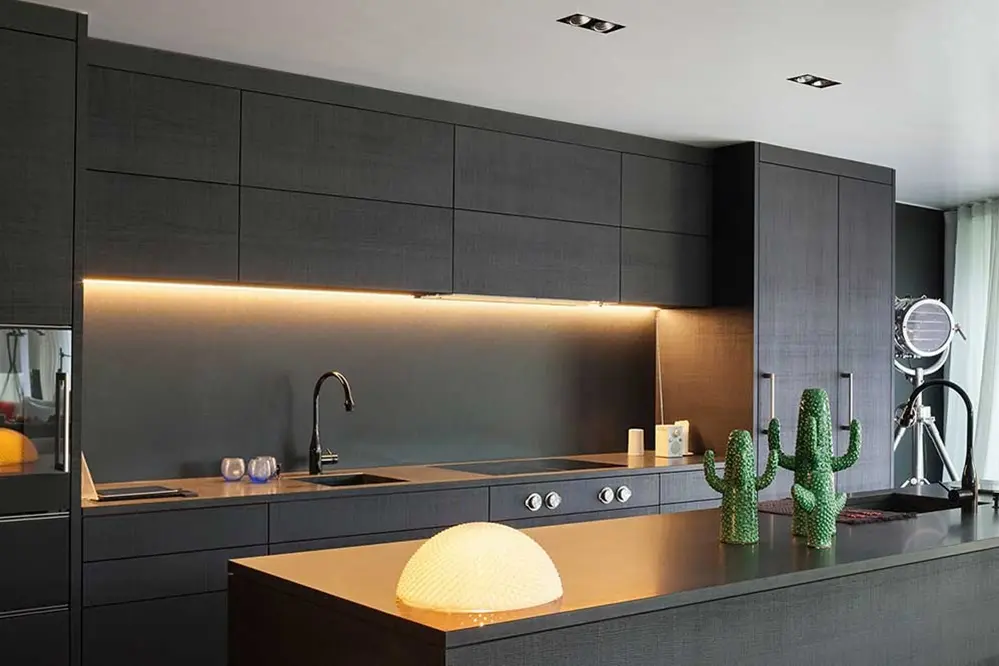
Install LED strips under kitchen cabinets for a sleek, modern look that also provides practical task lighting. This not only enhances the aesthetics of your kitchen but also improves functionality by illuminating the countertop. Under cabinet lighting can make food preparation and cooking tasks easier by providing focused illumination directly on the work surface.
Backlighting for TVs and Monitors
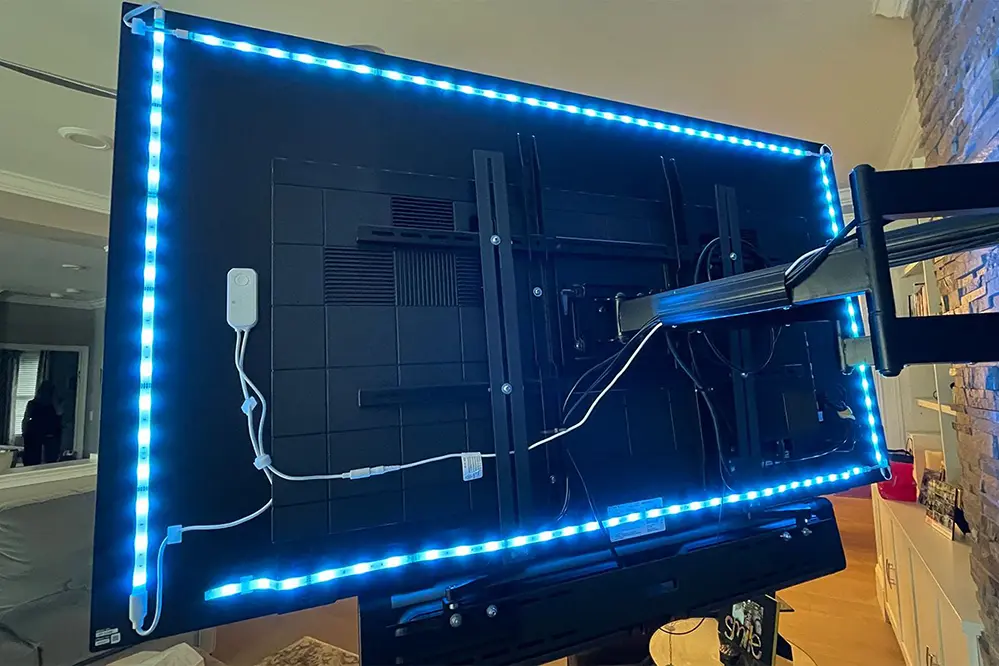
Reduce eye strain and add a stylish touch by installing LED strips behind your TV or computer monitor. The soft backlight can make watching TV or working on your computer more comfortable and enjoyable. Backlighting can also enhance the visual appeal of your entertainment setup by creating a subtle glow that complements the screen content.
Staircase Illumination

Enhance safety and aesthetics by adding LED strips along the edges of your staircase. This can make navigating the stairs easier, especially in low-light conditions, and add a modern touch to your home. Staircase illumination can also serve as a decorative element, highlighting the architectural design of your staircase and creating a visually striking feature.
Advanced Techniques for LED Strip Light Installation
Cove Lighting
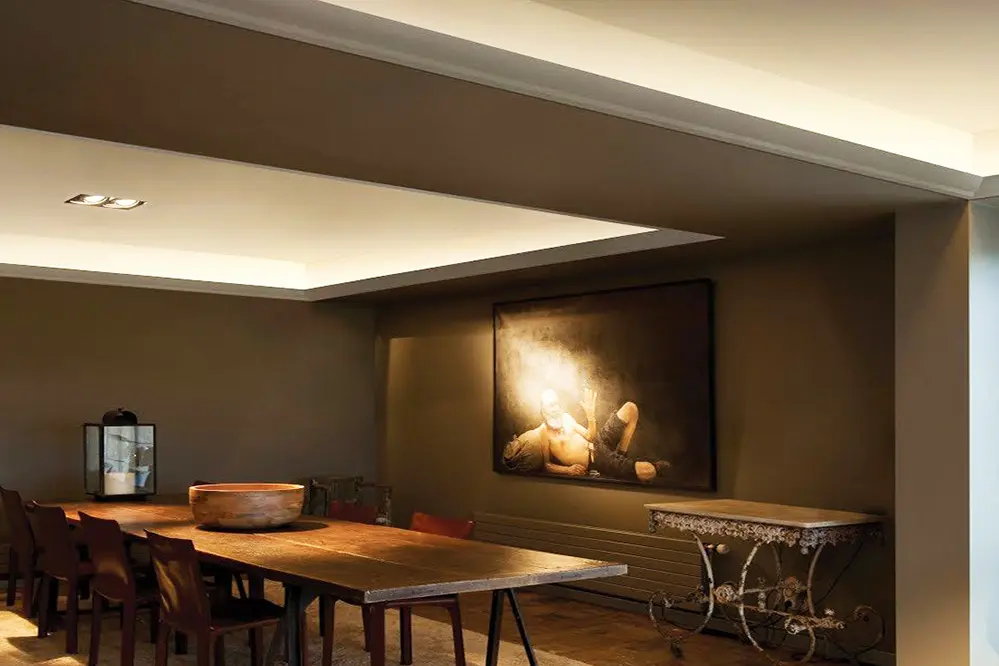
Cove lighting involves installing LED strips in a recessed area, such as walls, a ceiling cove, or a shelf. This technique creates a soft, indirect light that adds depth and dimension to a room. It’s perfect for living rooms, bedrooms, and even bathrooms. By hiding the LED strips from direct view, you can achieve a sophisticated and elegant lighting effect.
Under Furniture Lighting
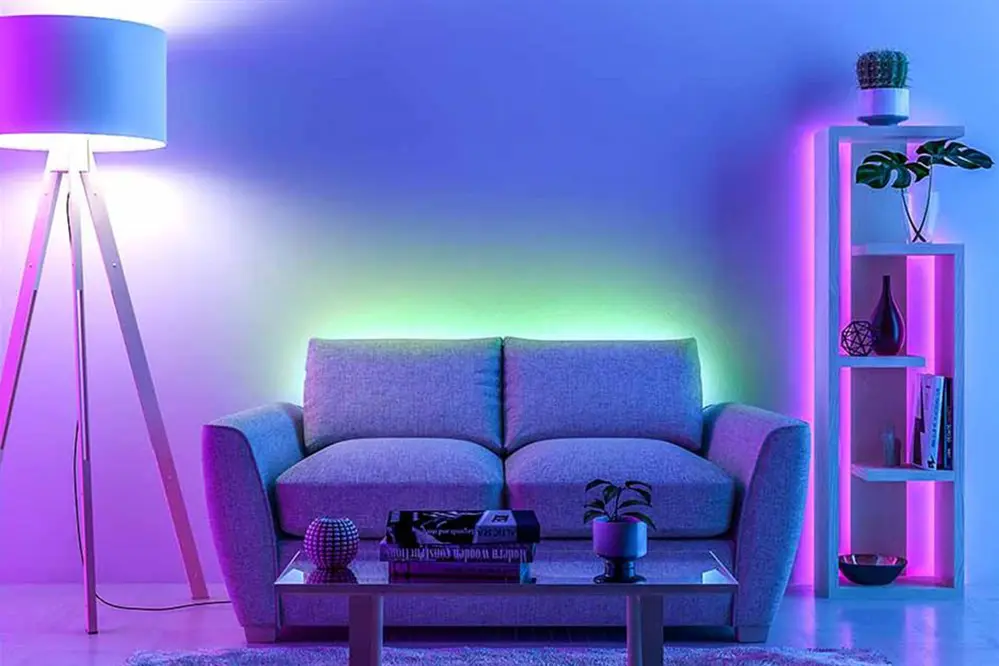
Adding LED strips under furniture, such as sofas, beds, or cabinets, can create a floating effect that adds a futuristic touch to your space. This technique not only enhances the aesthetics but also provides practical lighting for navigating the room at night. It’s an excellent way to add a subtle yet impactful lighting element to your home.
Outdoor Applications
LED strip lights are not limited to indoor use. Waterproof LED strips can be used to illuminate outdoor spaces, such as patios, decks, and gardens. They can highlight pathways, create a cozy ambiance for outdoor gatherings, or add a decorative touch to your landscape. Ensure you choose LED strips designed for outdoor use to withstand weather conditions.
Troubleshooting Common Issues
Adhesive Problems
If the adhesive backing of your LED strips is not sticking properly, it could be due to a dirty or uneven surface. Clean the surface thoroughly and ensure it’s dry before applying the strips. If the problem persists, consider using additional adhesive or mounting clips to secure the strips in place.
Flickering Lights
Flickering LED strip lights can be caused by several issues, including a faulty power supply, loose connections, or incompatible dimmers. Check all connections and ensure the power supply matches the voltage and wattage requirements of your LED strips. If you’re using a dimmer, make sure it’s compatible with LED lights.
Color Inconsistencies
Color inconsistencies in LED strip lights can occur if the strips are not from the same batch or if there’s a voltage drop along the length of the strip. To avoid this, purchase all your LED strips from the same manufacturer and batch. Additionally, use a power supply that can handle the total wattage of the strips and consider using shorter lengths to minimize voltage drop.
Maintenance and Care
Regular Cleaning
Dust and dirt can accumulate on LED strip lights, affecting their brightness and appearance. Regularly clean the strips with a soft, dry cloth to maintain their performance. Avoid using harsh chemicals or abrasive materials that could damage the lights.
Checking Connections
Periodically check the connections of your LED strip lights to ensure they remain secure. Loose connections can cause flickering or complete failure of the lights. Tighten any loose connections and replace any damaged components as needed.
Replacing Sections
If a section of your LED strip lights becomes damaged or stops working, you can replace just that section instead of the entire strip. Most LED strips can be cut at designated points, allowing you to remove the damaged section and connect a new piece. Ensure you use compatible connectors and follow the manufacturer’s instructions for a seamless repair.
Conclusion
LED strip lights offer endless possibilities for enhancing your home’s lighting. Whether you choose to install them on the ceiling or the wall, the key is to plan carefully, consult an installation guide, and select the right type of LED strips for your needs. From creating ambient lighting to highlighting architectural features, LED strip lights can transform any space into a beautifully lit environment.
By understanding the basics, choosing the right products, and following best practices for installation and maintenance, you can achieve professional-level results that elevate your home’s aesthetic and functionality. For more tips and inspiration, explore our resources or contact us directly. Your journey to a brilliantly lit home starts here.
